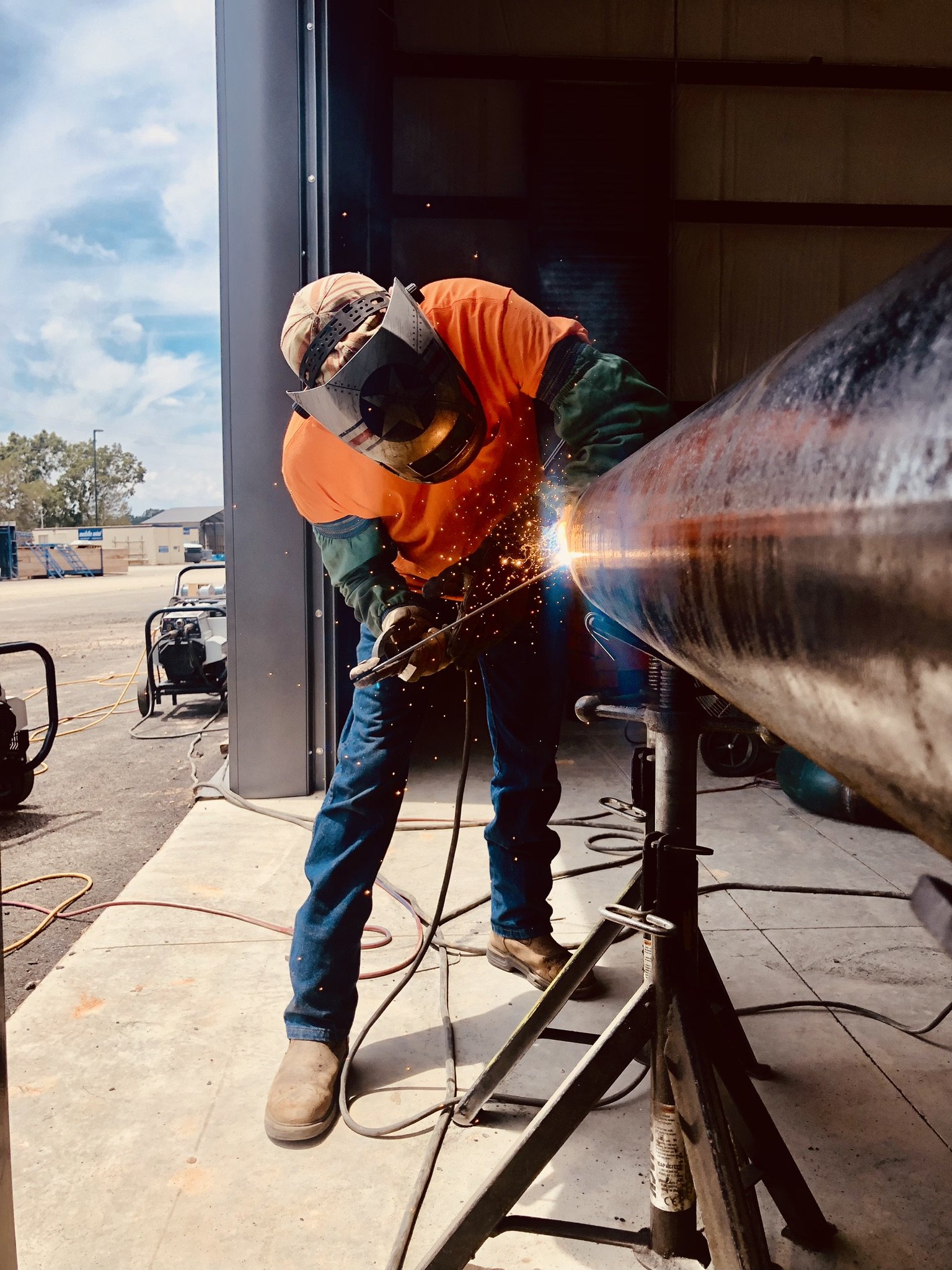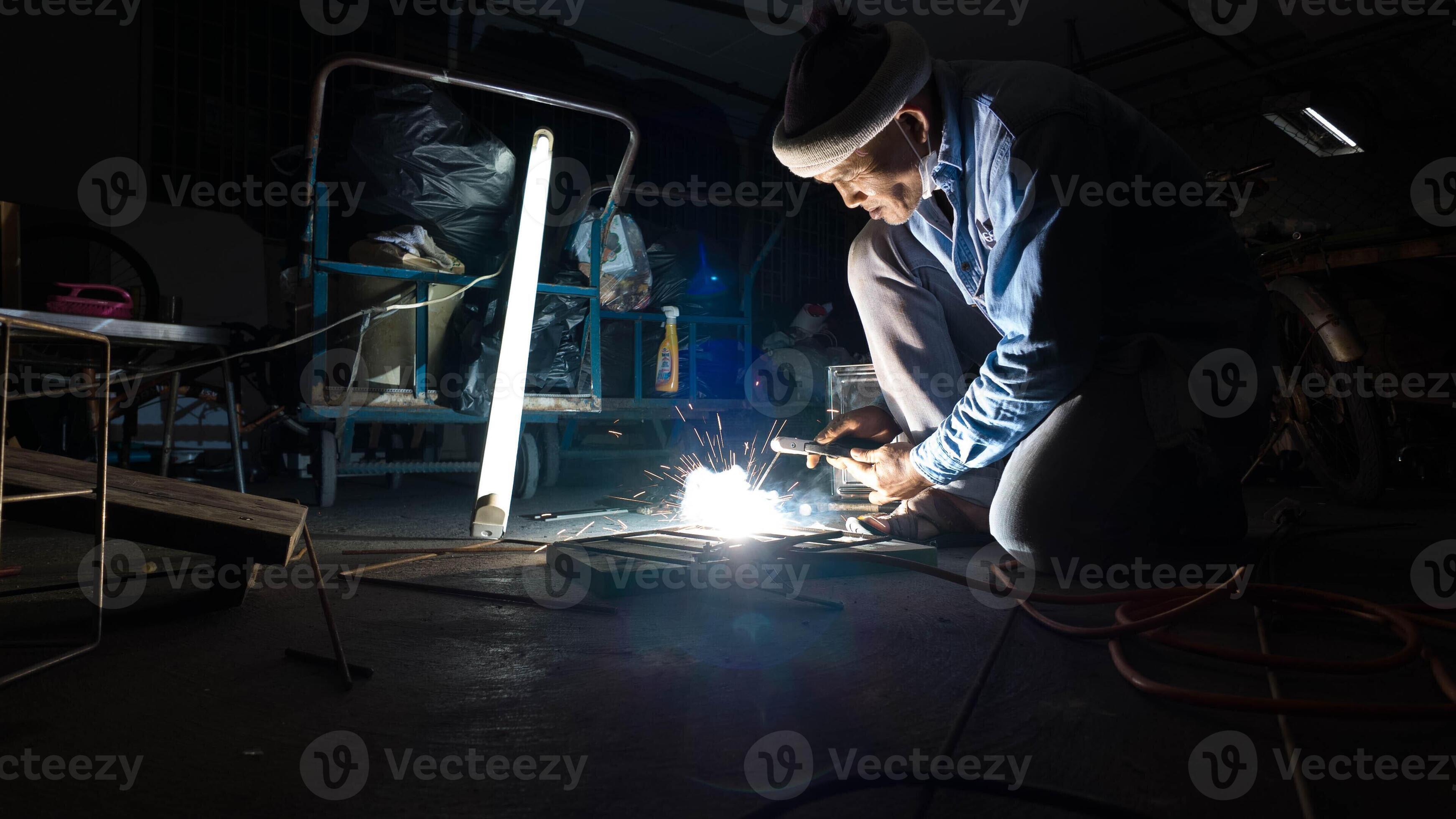Everything about Welding: Key Insights Into Techniques and Finest Practices for Success
Welding includes a range of methods, each fit for details materials and applications. Recognizing these techniques, such as GMAW, SMAW, and TIG, is crucial for attaining perfect results. The right tools and safety techniques can not be forgotten. As prep work and repairing play important functions in the welding procedure, mastering these components can greatly boost the high quality of the end product. What are the vital aspects that guarantee a successful weld?
Comprehending Different Welding Techniques
Welding strategies include a variety of approaches, each matched to details applications and materials. Amongst the most usual methods are Gas Steel Arc Welding (GMAW), Secured Steel Arc Welding (SMAW), and Tungsten Inert Gas Welding (TIG) GMAW, also called MIG welding, is preferred for its speed and versatility, making it excellent for thin products. SMAW, or stick welding, is preferred for its simplicity and performance in outdoor settings, particularly with thicker steels. TIG welding uses precision and control, making it appropriate for detailed work and non-ferrous steels (Montana Mobile Welding and Repair Welding). Each technique has its special advantages and considerations, permitting welders to select the most effective method based on the job's requirements, product kind, and wanted end results. Comprehending these methods is essential for effective welding
Crucial Welding Devices and Devices
While various welding strategies call for certain skills, the best devices and devices are equally necessary for accomplishing high quality outcomes. Important welding tools includes welding machines, which differ relying on the technique-- such as MIG, TIG, or stick welding. Protective equipment, consisting of aprons, safety helmets, and handwear covers, assurances security and convenience during the procedure. Additionally, clamps and fixtures aid secure products in position, making certain precision in welds. Consumables like welding rods, cord, and protecting gas are also vital elements that influence the quality of the weld. Tools such as cutters and mills promote surface preparation and post-weld ending up, contributing to an expert result. Purchasing top quality tools inevitably enhances the efficiency and efficiency of welding tasks.
Safety Practices in Welding
Appropriate security techniques are crucial in the welding market to safeguard workers from potential risks. Welders should use suitable personal safety devices (PPE), consisting of helmets with appropriate shading, gloves, and flame-resistant clothes. Adequate ventilation is essential to lower exposure to hazardous fumes and gases created during the welding procedure. In addition, workers need to be educated in the appropriate handling of welding tools to stop accidents. Fire safety and security measures, such as maintaining combustible materials away from the welding area and having fire extinguishers easily offered, are essential. Regular inspections of equipment and workspaces can assist determine prospective dangers before they lead to accidents. By adhering to these security practices, welders can produce a safer working atmosphere and minimize risks related to their trade.
Readying Materials for Welding
Preparing products for welding is a vital step that greatly affects the top quality and integrity of the last item (Fabrication). Correct prep work entails cleaning the surface areas to get rid of impurities such as rust, oil, and dirt, which can compromise the weld. Techniques such as grinding, sanding, or using solvents are frequently employed to attain a tidy surface area. In addition, ensuring that the products mesh comfortably is necessary; gaps can cause weak welds. It's also vital to consider the alignment and positioning of the elements, as this will affect the ease of welding and the final end result. Lastly, choosing the proper filler material and making sure compatibility with the base metals is necessary for attaining strong, long lasting welds
Tips for Achieving High-Quality Welds
Attaining premium welds requires focus to information and adherence to finest practices throughout the welding process. Correct joint preparation is necessary, making sure surface areas are clean and totally free from pollutants. Selecting the ideal filler material and welding method based upon the base metals is essential for suitable bonding. Keeping consistent travel rate and angle while welding can avoid issues and promote uniformity. In addition, regulating warm input is vital; excessive warmth can cause bending and compromised joints. If essential, on a regular basis evaluating the welds throughout the procedure allows for immediate modifications. Finally, using suitable post-weld therapies, such as cleansing and stress alleviation, can improve the resilience and stability of the weld, ultimately making sure a successful outcome.
Repairing Usual Welding Issues
Welding frequently presents challenges that can affect the high quality and stability of the end product. Common issues such as porosity, irregular weld beads, and getting too hot can develop, each needing details repairing techniques. Recognizing these problems is crucial for welders to improve their abilities and attain perfect results.
Porosity Problems Explained
Although porosity can frequently be forgotten, it continues to be an important issue in welding that can endanger the stability of a finished product. Porosity describes the visibility of tiny gas pockets within the weld bead, which can lead and deteriorate the joint to early failing. This trouble commonly develops from pollutants, dampness, or incorrect securing gas coverage throughout the welding process. To mitigate porosity, welders should confirm that the base materials are dry and clean, make use of ideal protecting gases, and preserve constant welding specifications. Regularly evaluating the tools and environment can likewise aid determine prospective concerns before they materialize in click the weld. Dealing with porosity properly is crucial for attaining solid, long lasting welds that satisfy quality requirements.

Irregular Weld Beans
Irregular weld beads can considerably influence the top quality and strength of a completed product. Different aspects contribute to this concern, consisting of incorrect traveling speed, incorrect amperage settings, and irregular electrode angles. When the welder relocates also promptly, a bead may show up narrow and do not have infiltration, while relocating as well gradually can trigger excessive accumulation. Additionally, making use of the wrong amperage can result in either undercutting or too much spatter, both of which concession weld integrity. The welder's method, such as inconsistent lantern motion, can additionally lead to uneven grain look. To mitigate these troubles, welders should concentrate on maintaining consistent, regulated movements and ensuring proper devices setups to achieve uniformity in their welds. Consistency is essential to attaining strong and reliable welds.
Overheating and Bending Issues
Too much warmth during the welding process can cause significant getting too hot and deforming issues, impacting the structural honesty useful site of the workpiece. These issues typically materialize as distortion, which can compromise alignment and fit-up, making more setting up challenging. Aspects adding to overheating include the selection of welding specifications, such as voltage and take a trip rate, along with the kind of product being welded. To minimize these problems, welders must maintain regular traveling rate and ideal warmth input while keeping an eye on the workpiece temperature. In addition, preheating or post-weld warm treatment can aid ease anxieties triggered by rapid cooling - Belgrade Welding. Regular assessment and adherence to best techniques are essential in protecting against overheating and guaranteeing the longevity and reliability of welded frameworks
Regularly Asked Inquiries
What Are the Career Opportunities in the Welding Market?
The welding industry uses diverse job opportunities, including positions as welders, engineers, examiners, and teachers. Experts can work in production, building, aerospace, and automotive sectors, gaining from strong demand and competitive incomes in various roles.
Just How Can I Boost My Welding Rate Without Giving Up Top Quality?
To improve welding rate without sacrificing high quality, one need to exercise effective strategies, keep equipment, optimize setups, and enhance hand-eye control. Regular training and looking for feedback can likewise substantially add to attaining faster, premium welds.
What Qualifications Are Offered for Welders?
Countless certifications exist for welders, consisting of those from the American Welding Culture (AWS), the National Facility for Building Education And Learning and Research Study (NCCER), and different industry-specific companies. These credentials enhance employability and demonstrate skill proficiency.
Exactly How Does Welding Affect the Qualities of Metals?
Welding influences the residential or commercial properties of steels by altering their microstructure, which can lead to changes in toughness, ductility, and firmness. Warm input and cooling rates during the procedure considerably affect these product qualities.
Can I Weld Dissimilar Metals With Each Other?
